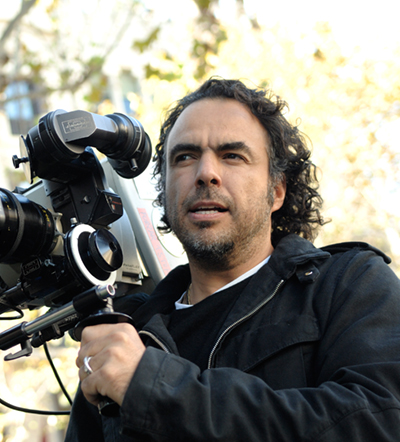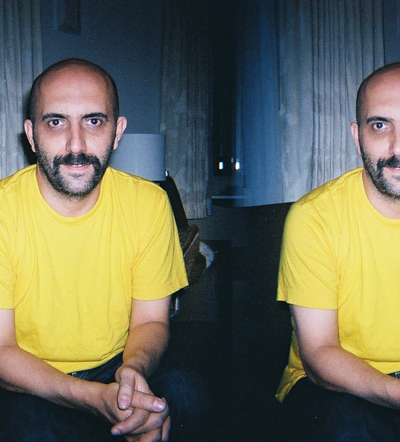Click for Slideshow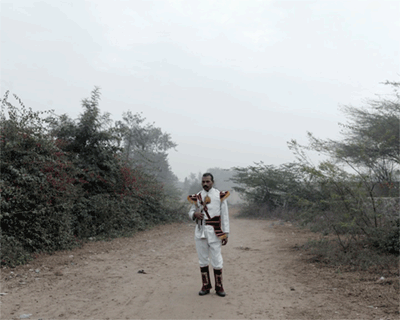
![]()
Photographer Bharat Sikka finds the still moments in the storm where new dust is just beginning to settle over old dust. Hardly recognizable as India — without the celebrated warm saturated hues of oranges, magentas and ambers — Sikka shows this side of the world in the bluest of grays. In his previous PLANET contribution, Seeing in Between, he gave us slowly calculated views of the changing physical terrain of India that comes along with economic development. Deeper down this road, Matter is articulated in somewhat quicker gestures as a record of calm in chaos. From an ominous still life of crinkled plastic to a portrait of a face silhouetted by hair, we see that Sikka’s connection to the looming changes is emotional. Matter will be up until March 19th at Nature Morte Gallery in Berlin. Sikka will continue to add images to the site mattershow.com throughout the year.


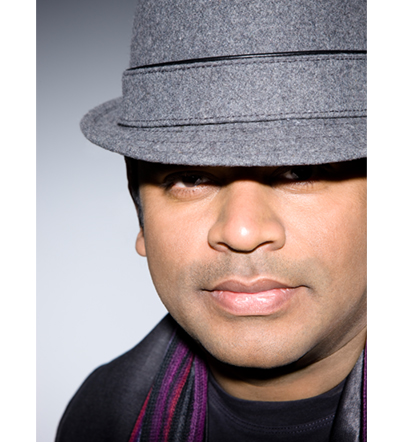
![]()
On February 26, A.R. Rahman could make history. On that night, he could be the first Indian-born composer to win four Oscars, having been nominated for Best Original Score and Best Original Song (”If I Rise”, featuring Dido) for the film 127 Hours. Then again, such boundary-breaking does not seem to faze this veteran, who’s worked on over 110 films and who already made history with his two Academy Awards for Danny Boyle’s Slumdog Millionaire in 2008. Also directed by Boyle, 127 Hours depicts the harrowing fight for survival of mountain-climber Aron Ralston (played by James Franco). The film follows Ralston for the titular five days, after his arm was trapped by a boulder and he resorts to unthinkable measures to free himself. Dialogue is minimal in 127 Hours, meaning music holds a more significant role in driving this otherwise one-man show. Rahman spoke to us from his home in Chennai about such challenges, not to mention his charitable work, for which he recently earned the Crystal Award from the World Economic Forum.
![]()
Audio clip: Adobe Flash Player (version 9 or above) is required to play this audio clip. Download the latest version here. You also need to have JavaScript enabled in your browser.

Alejandro González Iñárritu, the Mexican film director working in Hollywood, is a man whose search for meaning is relentless. In all of his films, from the first hit, “Amores Perros”, to the latest, “Biutiful”, the protagonists search for meaning in an often meaningless and cruel world. But unlike directors like Darren Aronofsky, Lars von Trier, or Gaspar Noe, whose films sometimes veer toward grizzly hopelessness, Iñárritu always provides redemption in his otherwise quite heavy films. There is always an element of hope in them that feels neither indie film heavy-handed nor Hollywood-cheesy.
In Iñárritu’s new film, which opens in limited release tomorrow, Javier Bardem plays Uxbal, a hustler on the streets of Barcelona. Diagnosed with terminal cancer, he spends the remainder of his life taking care of his two small children, dealing with his estranged, bi-polar wife, and acting as a liaison between the corrupt police and the African and Chinese illegal immigrants who make a living in the counterfeits business. His tragedy is that of a basically decent man who has to do indecent things in order to survive.
I recently caught up with Iñárritu on his short visit to New York in order to discuss his work. Sitting in the lobby of the Mercer hotel, his dark eyes gleaming with vigor, he talked about existentialism and his life experiences, which have influenced his work.

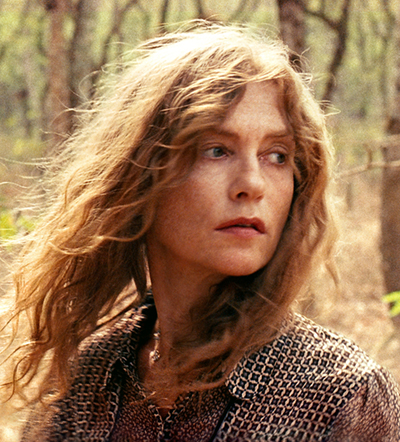
Isabelle Huppert as “Maria Vial” in WHITE MATERIAL directed by Claire Denis Photo Credit: © An IFC Films Release (Click to enlarge)
Once called “French cinema’s most beloved psychopath,” Isabelle Huppert is renowned for her provocative, intense, and unsparing performances in films such as The Piano Teacher and Violette Nozière. While beguiling, the “psychopath” moniker doesn’t quite stick: the characters Huppert plays can be murderous or sadomasochistic, but her performances are characterized by an exploration of the darker side of human nature, rather than an exploitation of it.
In her latest film, White Material, Huppert plays Maria, the white manager of a coffee plantation in an unidentified African country on the verge of civil war. When most – if not all – of the other white families flee, Maria refuses to leave: a refusal that is either the mark of exceptional resolve or exceptional stubbornness. Eventually her son takes up with child soldiers following a rebel leader known only as “The Boxer,” while Maria, with her deep, mysterious attachment to the land, refuses to acknowledge that the country she has lived in for so long has been irreversibly altered. PLANET spoke to Isabelle Huppert about White Material, her work with renowned French director Claude Chabrol, as well as her recent unexpected appearance in Law and Order: SVU.


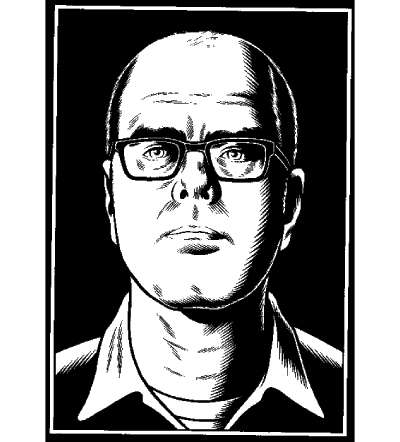
Illustration and Images courtesy of Charles Burns
Charles Burns has been a luminary of the alternative comics world since the early ’80s, when his work was published in the underground comics anthology RAW, edited by Art Spiegelman and Françoise Mouly. Most famous for Black Hole — published between 1995 and 2005, the series chronicles the misfortunes of a group of Seattle teenagers who contract a horrifying sexually transmitted disease which leads to gruesome disfigurations — Burns is also the in-house illustrator for The Believer and has done advertising work for commercial products such as Altoids and Coca-Cola.
His latest work, X’ed Out (Pantheon Books, $19.95), will be released on October 19th as the first installment in a new trilogy. Printed in brilliant full color, the book follows a young man named Doug as he drifts in and out of sleep-like states, flashbacks and what seem to be full on, drug-induced hallucinations. PLANET sat down with Charles Burns in his Philadelphia home to talk about X’ed Out, his so-deemed “genius for the grotesque” and why he doesn’t write teenage vampire romances.

Of contemporary filmmakers, perhaps only Lars von Trier could claim to be more divisive and controversial than Gaspar Noe. There are the hostile reviews, walkouts at Cannes, and the scene in his second feature, Irreversible, in which Monica Bellucci’s character is savagely beaten and raped — the origin of much of the controversy.
But to focus too much on Noe’s reputation is to ignore that he is one of the most gifted, original, and, yes, provocative filmmakers working today. His newest film, Enter the Void, is his most experimental and also his best. Set in Tokyo, much of the two-and-a-half-hour film is shot from the perspective of the disembodied spirit of its protagonist, Oscar, a young American drug dealer who is shot by the police during a bust. The film’s plot, which explores reactions to Oscar’s death, his past, and his arguably incestuous but definitely Freudian relationship with his sister is ultimately less important than Noe’s suggestion that death is the biggest trip. To talk about blasts of light or shaky cameras would blunt the impact of what is, formally at least, one of the most inventive psychedelic films in recent memory. PLANET spoke with Gaspar Noe about critical reaction to his movies, psychedelic films, and one of Enter the Void’s most memorable scenes.


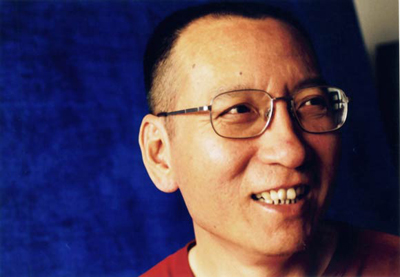
Photography via The Los Angeles Times

Liu Xiaobo was awarded the Nobel Peace Prize this month by the Nobel Committee in Oslo “for his long and non-violent struggle for fundamental human rights in China”. The third winner to be awarded the Peace Prize while imprisoned, Xiaobo is also the first person from China to win the prize. Arrested in June 2009 for “inciting subversion of state power”, Xiaobo was sentenced to eleven years in prison on December 25, 2009 for his concerted efforts urging Chinese leaders toward democratic reform. The prize is seen by many to be a rebuke to China’s human rights record.
Xiaobo has long lead impassioned efforts to criticize and critique his nation’s approach to human rights. When he found himself in the United States during the Tiananmen Square protests in 1989, he returned to China and joined the students. His eventual persuasion of many students to leave the square is credited with saving an untold number of lives. He has since been blacklisted and barred from publishing in his own country.
When his wife, Liu Xia, visited him to give him the news of the Nobel Peace Prize, she was detained by Beijing police. She remains under house arrest at this time, communicating to the outside world via Twitter. She writes: “Yesterday, Norwegian diplomats came to offer support for me and were barred outside the main gates.”


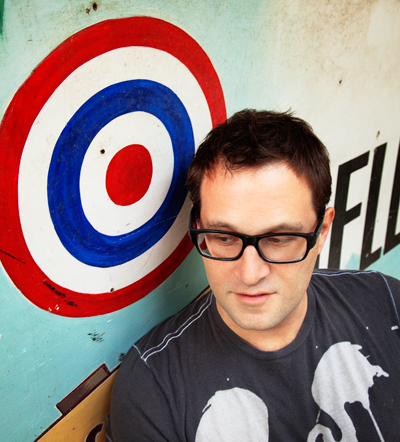
Photography by Michael Lavine
For David Andrew Sitek, a member of the unique and eclectic TV on The Radio and a producer, who has helped shape the sound of bands like the Yeah Yeah Yeahs and Liars, it’s easy to get typecast. Sitek was key in the creation of the “New Brooklyn” scene that first emerged ten years ago, but since then has been working hard to defy the expectations of his pedigree.
Sitek’s self-proclaimed production style is a wrench in the system, and is determined to destroy all he deems boring in music. It’s an ethos Sitek has carried over to his new pop project, Maximum Balloon. The album marks a somewhat drastic shift into unapologetically fun dance music, a genre Sitek likes because it’s “more about the ability to get inside the song, not worry about other stuff, and not be self conscious”.
Fortunately, Sitek didn’t have to explore this new territory alone. For Maximum Balloon, he enlisted the help of a different vocalist for each track, a structure that came about totally by accident. “I was kind of dicking around, which is how I started the song “Tiger”. I was just messing around, wrote lyrics, and I tried to sing it, which just sounded terrible. Then Aku [Orraca-Tetteh, from indie rock band Dragons of Zynth] came over, he sang it, it sounded incredible, and then I knew I couldn’t sing on any of the other songs,” says Sitek.
Audio clip: Adobe Flash Player (version 9 or above) is required to play this audio clip. Download the latest version here. You also need to have JavaScript enabled in your browser.
Buy this at iTunes.


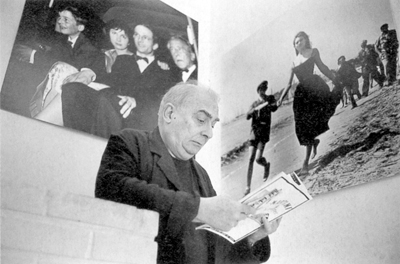

![]()
Claude Chabrol, a founder of the French New Wave movement in cinema, died Sunday at age 80. Though not as well known as his fellow New Wave auteurs, Chabrol produced movies the way Philip Roth produces novels — that is to say, at an astonishing pace and with an astonishing level of quality and originality. Le Beau Serge, released in 1958 (two years before Godard’s Breathless) is arguably the first movie of the French New Wave. Often overlooked, or worse, dismissed as mainstream — Hitchcock was perhaps his greatest influence — Chabrol’s films were always provocative, thrilling films that resisted the blanket, scornful term “thriller”. Chabrol’s best films — the greatest of which was Le Bucher — erased the boundary between victim and assailant, exposed the tension underlying seemingly idyllic families and towns, and skewered bourgeoise hypocrisy. His final film, Bellamy, was released in France in February of last year.


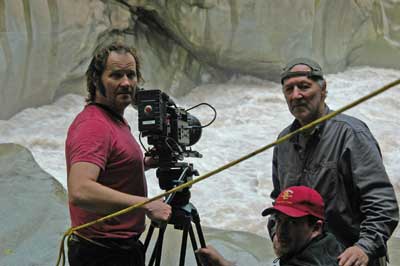
Werner Herzog directing My Son, My Son, What Have Ye Done? All Photography by Lena Herzog. Courtesy of Absurda. (Click images to enlarge)

Ever since he stole his first film camera, Werner Herzog has been making strange, brilliant films that blur the line between fact and fiction. His features and documentaries explore grand, elemental, even primeval themes — the nature of madness, the chasm between nature and civilization, and man’s mad ambition to conquer a hostile, implacable natural world. Over the past forty years Herzog has created a body of work that is arguably as powerful and durable as any contemporary filmmaker.
His 2009 film My Son, My Son, What Have Ye Done? — a film loosely based on the story of Mark Yavorsky, a grad student who, inspired by Aeschyles’ Oresteia, murdered his mother with a saber — comes out on DVD next month. PLANET spoke with Herzog about the madness he attracts, his cinematic vision, and his relationship with Roger Ebert.
Did you ever meet Mark Yavorsky?
Mark Yavorsky was found incompetent to stand trial and he was put away in a maximum-security mental institution, but he was released after eight years. And I met him at a trailer park. He lived in a trailer park, near Riverside, CA. …. His trailer was filled with strange memorabilia. In one corner he had a poster of Aguirre: The Wrath of God and there was a shrine built and a candle burning in front of it. When I walked in, I shrank back and I thought, “Oh, get yourself out of here. Stay out. Stay away from the man.”






 Facebook
Facebook Permalink
Permalink Digg
Digg Reddit
Reddit LinkedIn
LinkedIn StumbleUpon
StumbleUpon Tumblr
Tumblr